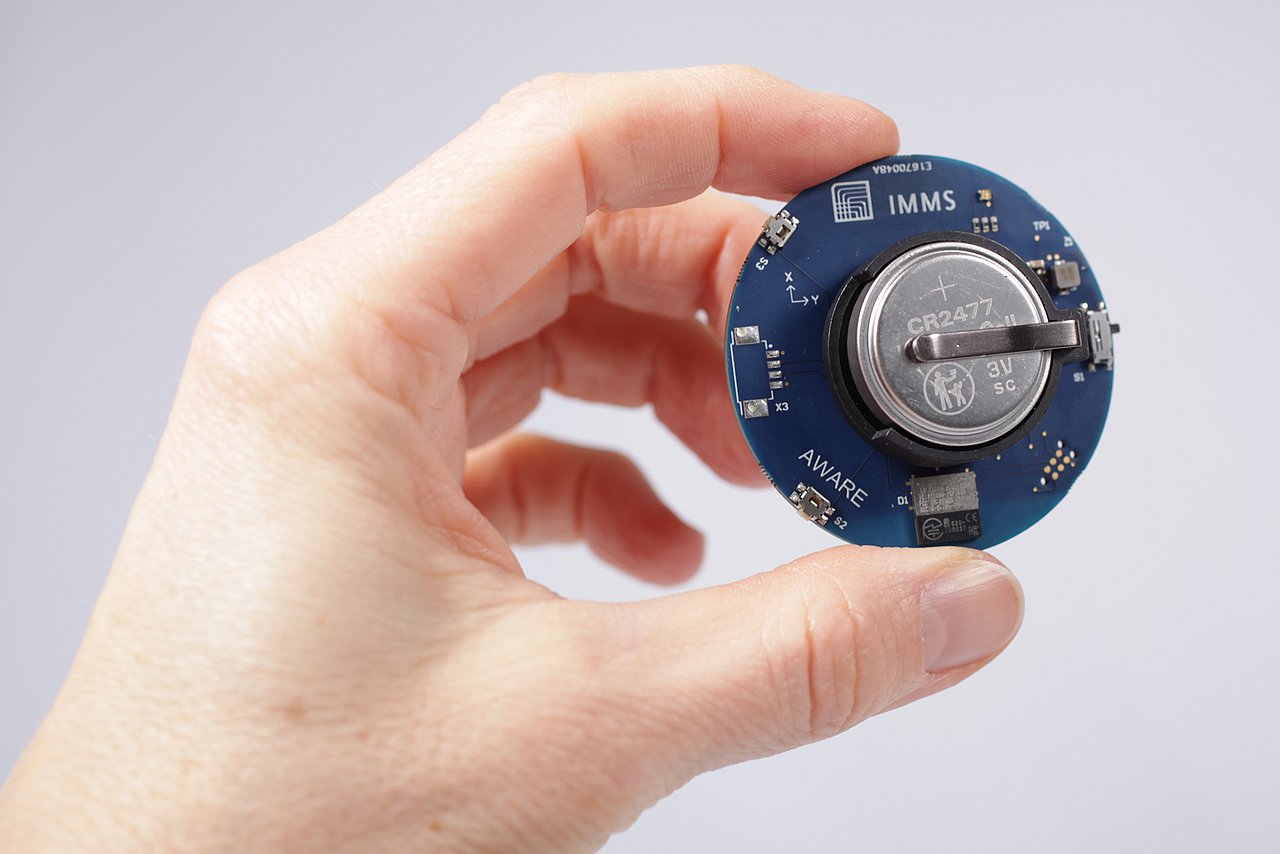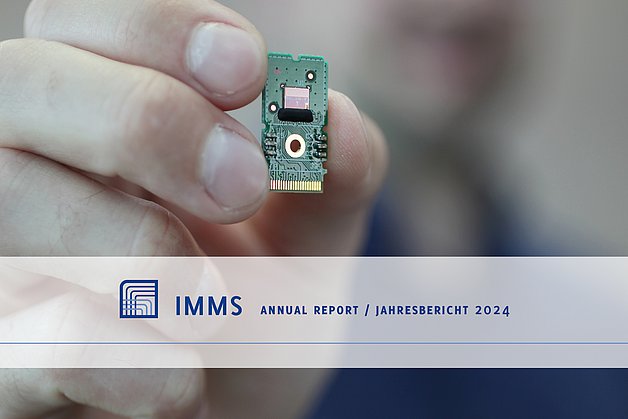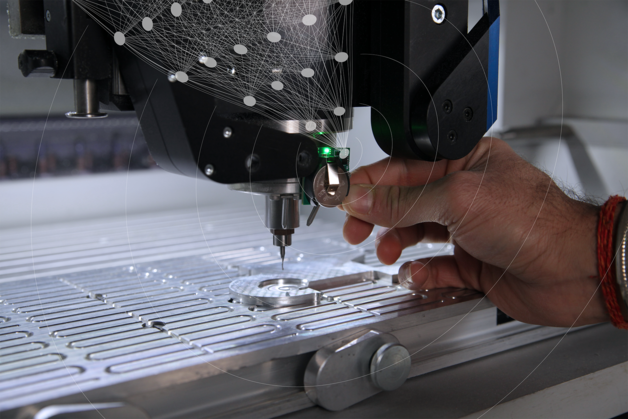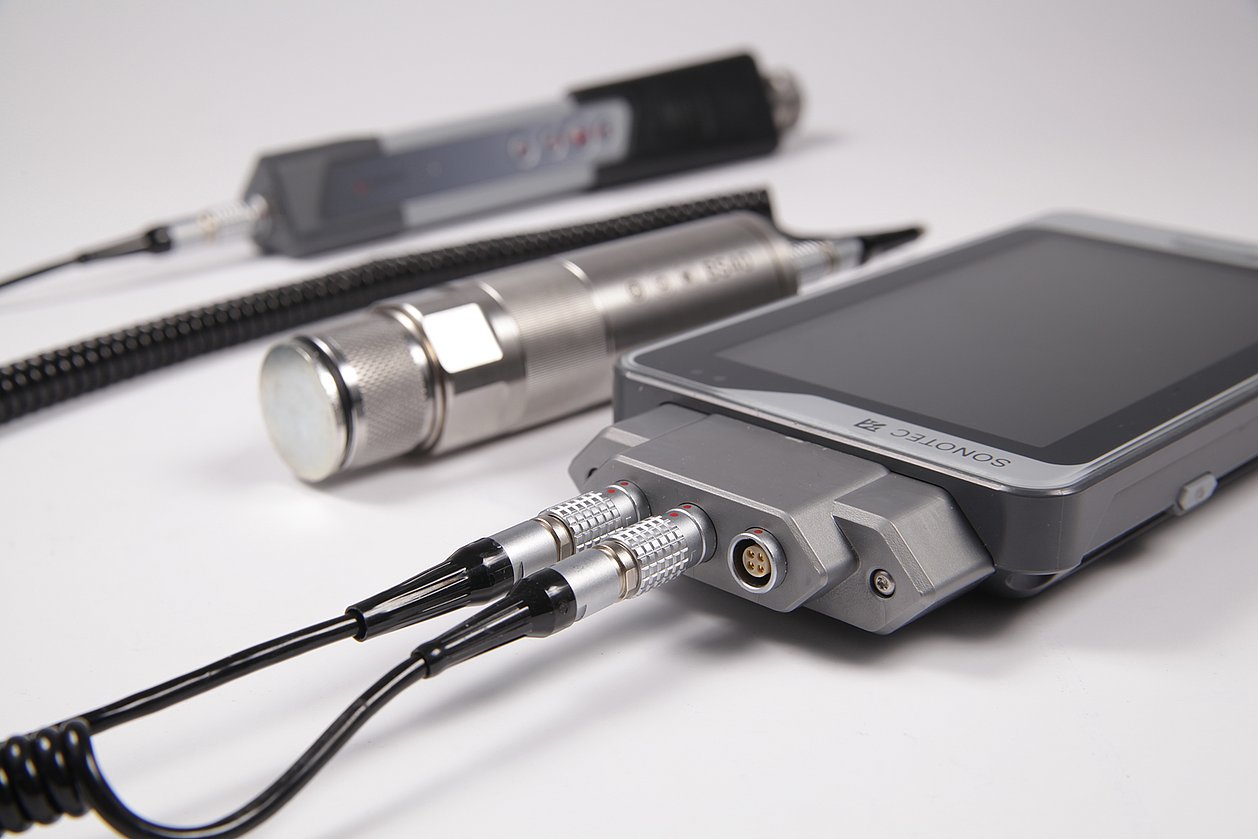Project HoLoDEC
IMMS researches ultra-low-power architectures (ULP) and circuit concepts as well as energy-efficient edge-AI systems with overall system energy modeling
Digitalisation and artificial intelligence enable many new applications by increasingly automating processes, services, and facilities. The key to this is the ‘Internet of Things’ (IoT) with a rapidly growing volume of data provided by a rising number of connected devices and sensors. This hardware is expected to operate more and more efficiently in terms of resources and energy while also responding quickly, especially in safety-critical applications. At the same time, it should be trustworthy from data acquisition to analysis. This is to be achieved by limiting the data traffic itself and processing data more and more near the point of origin through edge computing and thus less in the cloud.
For this purpose, IMMS is researching two issues in the HoLoDEC project: on the one hand, ultra-low-power architectures (ULP) and their efficient and automated design, and on the other hand, on edge AI systems that will enable energy-optimised power distribution between sensor and edge computing. Approaches from both focal points will be validated in two demonstrators, one for condition monitoring and one for an RFID sensor transponder IC with a ULP sensor frontend.
Automated design of ultra-low-power architectures
For design houses and chip developers, it is becoming increasingly challenging to develop optimal or energy-optimised integrated circuits and systems as these are becoming more complex and human resources are becoming scarcer. Therefore, IMMS is researching in close collaboration with Reutlingen University and Fraunhofer IIS/EAS to accelerate the development of analogue or mixed analogue/digital circuit blocks through generator-based, i.e., programmed processes.
As part of this, models should also be automatically generated to, for instance, consider non-functional properties such as energy consumption early in the system design. Both are necessary because with the currently common methods, the energy requirements of a system are only known towards the end of the design process and are therefore difficult to consider in the architectural design. At the system level, the lever for optimisations is the most significant. However, it can rarely be utilised since extensive changes in microarchitecture or topology would be required, sometimes in multiple iterations, and these, like the entire design of analogue components, would still have to be done manually.
IMMS is researching to reduce design times and uncertainties through automated designs and models. The goal is to accelerate the design process so that it can be iterated multiple times to optimise the energy consumption of a system early in the process.
With this new approach for automated design, IMMS will investigate and design particularly energy-efficient circuit concepts and validate them with a demonstrator for an RFID sensor transponder IC with a ULP sensor frontend. These results will be compared with manually designed chips. The demonstrator addresses a solution that enables the realisation of integrated sensor systems with very low energy budgets, ideally allowing for passive operation without batteries, and can be manufactured using cost-effective semiconductor technology.
Energy-efficient edge AI systems with overall system energy modeling
To make optimal use of AI algorithms on resource-constrained devices for IoT applications, IMMS is researching energy-efficient edge AI systems with energy-optimised power distribution between as much close-to-sensor data processing as possible and minimal offloading of tasks to the wireless network in the HoLoDEC project.
IMMS takes the lead in cross-system optimisation of energy consumption in distributed sensor systems. The foci include hardware and software design, energetic modeling of embedded systems, concepts and procedures for sensor and overall system energy management, investigation and implementation of algorithms for anomaly detection on ultra-low-power components, as well as algorithms for automatic data extraction and reduction in terms of information content and energy consumption impact within the sensor. The algorithms will provide compressed sensor data, which will then be transmitted to the edge-AI platform. To combine data from different sensors, algorithms for data fusion are being explored and implemented. Additionally, IMMS is developing energy consumption models for individual sensor systems and the overall system.
To utilise AI algorithms as close to the sensors as possible without the need for extensive data transport to a cloud, IMMS is conducting research on optimisations of edge AI system architectures based on defined requirements. The background is that models and algorithms are no longer limited to running on powerful servers with ample storage space but are intended to be used on microcontrollers for which they were neither originally developed nor directly transferable, thus requiring adaptation. Current research often focuses on developing high-performance models on a server. The goal is to build upon initial investigations into optimisation for microcontrollers and energy-saving potential and to make AI algorithms accessible for resource-constrained devices. These approaches are being validated in a demonstrator for condition monitoring.
Acronym / Name:
HoLoDEC / Ultra-low-power architectures (ULP) and circuit concepts as well as energy-efficient edge-AI systems with overall system energy modelingDuration:2022 – 2025
Project website:www.edacentrum.de/holodec/en
Application:
|IoT| safety-critical applications| condition monitoring| RFID sensorsResearch field:Smart distributed measurement and test systems|Integrated sensor systems
Related content
Case Study on Compression of Vibration Data for Distributed Wireless Condition Monitoring Systems.
Rick Pandey1. Felix Grimm2,3. Dominik Nille2. Christoph Böckenhoff2. Jonathan Gamez1. Sebastian Uziel1. Albert Dorneich2. Tino Hutschenreuther2. Silvia Krug1,4.Applied Sciences 2025, 15, 12346. DOI: doi.org/10.3390/app152212346
1IMMS Institut für Mikroelektronik- und Mechatronik-Systeme gemeinnützige GmbH, Ehrenbergstraße 27, 98693 Ilmenau, Germany. 2Balluff GmbH, 73765 Neuhausen auf den Fildern, Germany. 3Institute of Smart Sensors (IIS), University of Stuttgart, 70569 Stuttgart, Germany. 4Department of Computer and Electrical Engineering, Mid Sweden University, Holmgatan 10, 851 70 Sundsvall, Sweden.Smartes Maschinenmonitoring – Anomalien mit Edge-KI detektieren
Sebastian Uziel1.in elektroniknet.de, 11. November, S. 37 - 40, www.elektroniknet.de/automation/industrie-40-iot/anomalien-mit-edge-ki-detektieren.228572.html und in Markt&Technik, Trend Guide 2025, ePaper: wfm-publish.blaetterkatalog.de/frontend/mvc/catalog/by-name/MUT
1IMMS Institut für Mikroelektronik- und Mechatronik-Systeme gemeinnützige GmbH, Ehrenbergstraße 27, 98693 Ilmenau, Germany.Application of the Expert Design Plan Methodology on an Ultra-Low-Power Sensor Frontend
Lorenz Renner1. Ralf Sommer1,2. Yannick Uhlmann3.2025 21th International Conference on Synthesis, Modeling, Analysis and Simulation Methods and Applications to Circuit Design (SMACD), July 7 - 10, 2025, Istanbul, Turkiye, pp. 1-4, DOI: doi.org/10.1109/SMACD65553.2025.11092185
1IMMS Institut für Mikroelektronik- und Mechatronik-Systeme gemeinnützige GmbH, Ehrenbergstraße 27, 98693 Ilmenau, Germany. 2Technische Universität Ilmenau, Electrical Engineering and Information Technology, Electronic Circuits and Systems Group, Ilmenau, 98693, Germany. 3Electronics & Drives, Reutlingen University, Reutlingen, Germany.High-Sensitive Demodulator with Built-in Negative Offset Comparator for Passive UHF RFID Tags
Rohit Kesharwani1. Andre Jäger1. Martin Grabmann. Georg Gläser. Eric Schäfer1.IEEE RFID-TA 2024, Forum for advancing RFID technology and practice, Daytona Beach, FL, USA, December 18–20, 2024
1IMMS Institut für Mikroelektronik- und Mechatronik-Systeme gemeinnützige GmbH, Ehrenbergstraße 27, 98693 Ilmenau, Germany.

Patent
DE 10 2024 100 703
Method and sensor arrangement for monitoring the function of a machine component

Press release,
Extended service life for self-teaching wireless sensors for industrial maintenance
IMMS patent for edge AI solution wins bronze medal at iENA 2025

Press release,
AI without the net: Energy-efficient edge AI sensor system for industrial monitoring applications
IMMS exhibits at embedded world

Event,
SMACD 2025
International Conference on Synthesis, Modeling, Analysis and Simulation Methods, and Applications to Circuit Design

Event,
InnoCON 2025
Innovation policy flagship event of the German Land of Thüringen. Topic “Key technologies: Paving the way for the world of tomorrow“
Contact
Contact
Dr.-Ing. Tino Hutschenreuther
Head of System Design
tino.hutschenreuther(at)imms.de+49 (0) 3677 874 93 40
Dr. Tino Hutschenreuther will answer your questions on our research in Smart distributed measurement and test systems and the related core topics Analysis of distributed IoT systems, Embedded AI and Real-time data processing and communications, on the lead applications Adaptive edge AI systems for industrial application and IoT systems for cooperative environmental monitoring as well as on the range of services for the development of embedded systems.
Funding
The HoLoDEC project on which this report is based was funded by the German Federal Ministry of Research, Technology and Space (BMFTR) under the reference 16ME0703. The author is responsible for the content of this publication.
















